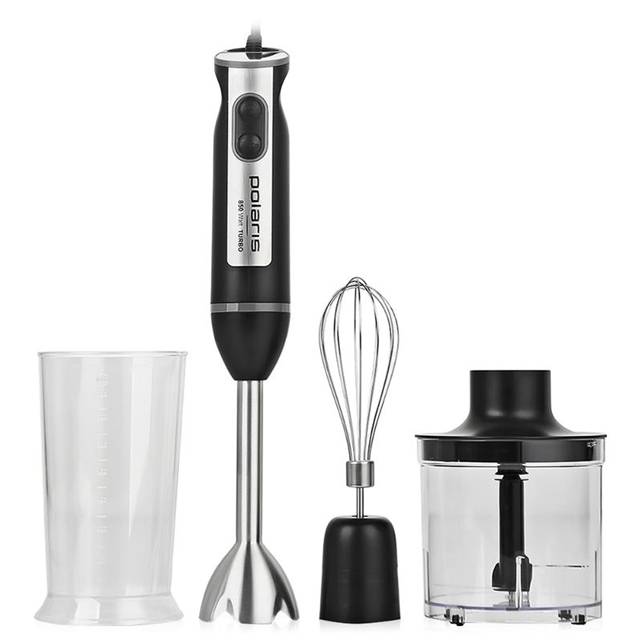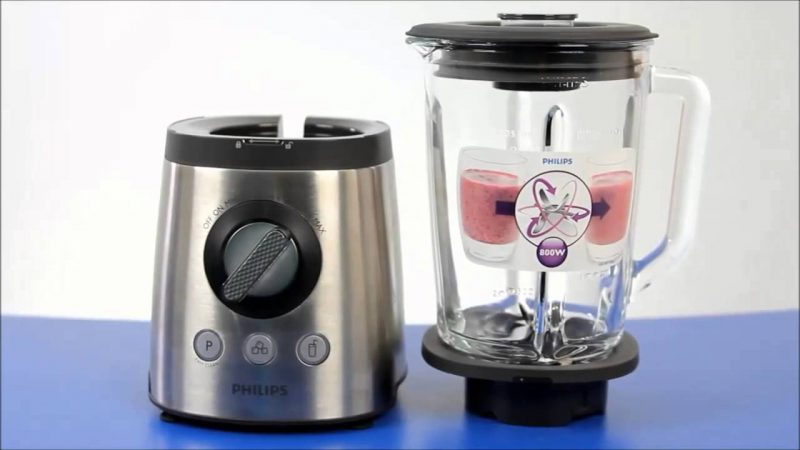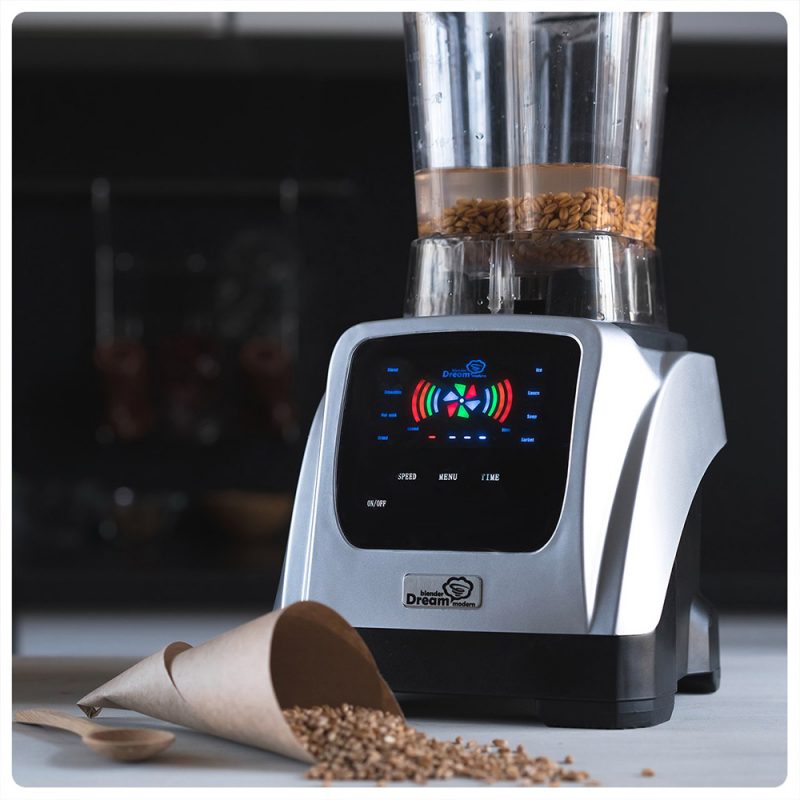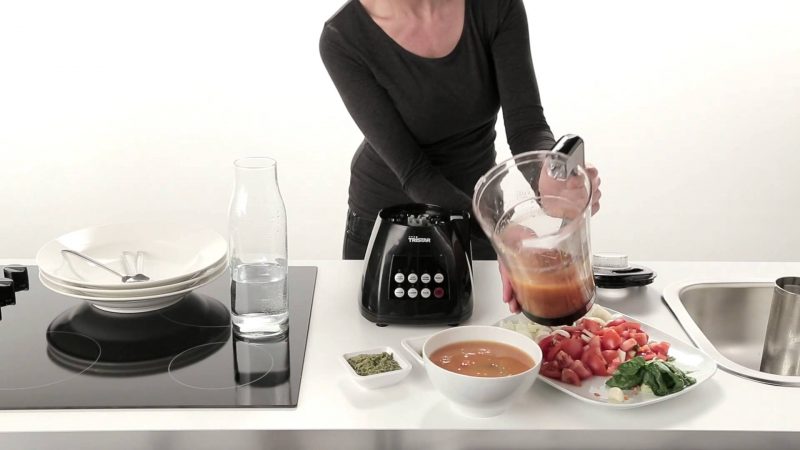Often, users face a dilemma: a blender or a food processor - which is better to choose? Blenders are compact in size, the set of options for such devices is limited. Food processors replace multiple devices. The cost of the culinary technique also varies. To understand which device will cope with the tasks, it is necessary to consider each type of equipment.
Purpose and features of the food processor
A powerful and voluminous processor easily copes with complex culinary work. Multifunctional household appliances are equipped with:
- a set of interchangeable nozzles and discs;
- several bowls (bowls) of different volumes;
- additional elements, accessories for machining products.

Food processor
Culinary machines perform the functions of several gadgets. Thanks to the available nozzles and accessories, they perform the functions:
- a blender;
- meat grinders;
- a mixer;
- shredders / vegetable cutters;
- kneading machine;
- juicers;
- devices for splitting ice;
- coffee grinders.

Multifunctional harvester
Universal devices can easily cope with slicing fruits and vegetables. With their help, you can grind very hard coffee beans, squeeze juice, cut products for salads and other dishes.
Depending on the model, the number of removable nozzles and options can vary greatly. The more functions a device has, the more expensive it is. It is very difficult for housewives planning to cook food in large quantities or seeking to learn all the basics of culinary business without such a culinary machine.
Thanks to the special shape of the self-sharpening knives, the universal unit copes with chopping or cutting even solid products.
Harvesters are equipped with removable bowls, which are plastic, glass, metal (stainless steel). The most durable and strong are metal containers.
Culinary devices are designed to prepare large portions of semi-finished products (dough, minced meat) or finished products (creams, sauces, cocktails, fruit drinks). In household appliances, the volume of bowls varies from 1.5 to 5.5 liters.
Blender properties
Blenders are different compactness, can perform a limited number of operations - basically beat and crush. Culinary devices are available in two types:
- Submersible (manual) models. Devices consume electricity from 160 to 700 watts. In professional models, the power is 1000 watts.
- Stationary blenders have a rated power of 180 to 1000 watts. In professional devices, this figure is 1500 watts.
Submersible models
Manual and stationary models differ in functionality and design. Immersion devices have a long leg, consisting of two parts - handles with control buttons and nozzles with knives. Using an immersion device, any volume of products can be prepared for further processing.
Some models, in addition to a removable nozzle with knives, are equipped with a whisk. The kit may include additional containers, mini-glasses.

Hand blender
The case is made of durable plastic or metal (mainly stainless steel, aluminum). Work items metal. Plastic models are cheaper.
Via blender You can prepare vegetable or fruit puree, cocktails, sauces. The device grinds and brings the ingredients to a pasty state. The device is easy to care for: removable parts can be washed in a dishwasher.

Submersible blender with whisk and containers
For compact immersion appliances there is a place in any kitchen. This is a big plus compared to bulky food processors. When such a technique is at hand, the cooking process becomes more comfortable.
The hand blender has one significant drawback: during operation, it must be held in your hand.
Stationary Models
Stationary devices are equipped with a special capacity, in the lower part of which are sharp shaped knives. Buttons for control are located on the case.

Stationary blender
Kitchen appliances, like mini-combines, have a wide range of functions compared to submersible counterparts, but their capabilities directly depend on power:
- Devices up to 300 watts are used for the preparation of cocktails and light liquid mixtures.
- Models from 350 to 650 watts, in addition to beating, do well with the grinding of cooked and not very solid products (vegetables and fruits).
- To chop nuts, dried fruits, cereals, hard meat, vegetables, you need a device with a capacity of 650 to 1000 watts. This blender is the perfect solution for home cooking.
- Units with a capacity of over 1000 W belong to the professional category. Machines can cope with a large amount of work, have advanced capabilities, usually have a touch control panel. Such aggregates whip proteins and cream into a resistant foam, knead pancake dough, grind the products into minced meat. Almost all devices are equipped with a split ice function. The cost of such machines is an order of magnitude higher than the analogues of lower power.

Stationary blender with touch controls
An important parameter is the volume of the bowl, since this parameter determines how much of the food can be processed at a time. The capacity of the bowls varies from 0.4 to 2 liters. To prepare only cocktails, enough dishes with a volume of 1-1.5 liters will be enough.
Stationary devices have advantages. Machines are more comfortable than submersible analogues, since after placing the ingredients in the container and turning on the desired program, the process takes place without human intervention. While the assistant is working, you can do other work. The appliance is suitable for daily use. Removable parts (bowls and nozzles) can be washed in the dishwasher.

Cooking first, second courses and dessert
The case of stationary type blenders can be plastic or combination (plastic-metal). The second option is more practical, but more expensive.
Which device is better
To finally say what is better - a blender or a food processor, is quite difficult. It all depends on the task that the culinary technique must perform. Each user selects a technique according to the following criteria:
- appearance;
- specifications;
- parameters;
- number of options and nozzles;
- bowl volume and power;
- case material.
An important indicator is also the price. The most budget option is hand blenders. If you need to quickly grind or beat the ingredients, then the best technique can not be found.
The blender is indispensable when working with liquid mixtures. The food processor copes with the mechanical processing of solid products. The multifunctional device is equipped with a set of nozzles and discs, it can grind and chop a large number of ingredients at a time, which will be enough for several servings. The only thing that combines blenders and combines is the accelerated process of preparing various dishes.
Regardless of which equipment is chosen, to increase the life of the device, all the requirements that are presented in the instructions must be observed.
